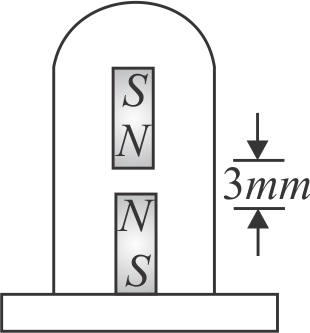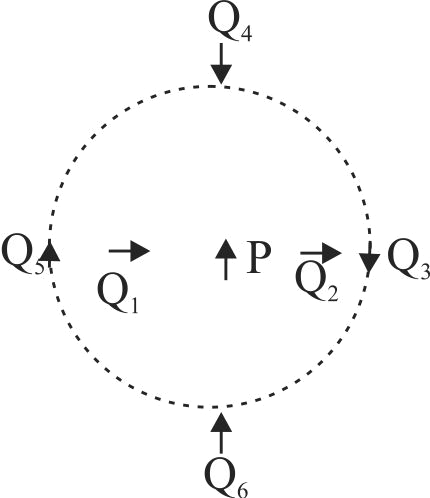360392
Two identical magnets with a length \(10\,cm\) and weight \(50\,g\) for each are arranged freely with their like poles facing in a vertical glass tube as shown in figure.
The upper magnet in the air above the lower one so that the distance between the nearest poles of the magnets is \(3\,mm.\) Determine the pole strength of the poles of these magnets.
360392
Two identical magnets with a length \(10\,cm\) and weight \(50\,g\) for each are arranged freely with their like poles facing in a vertical glass tube as shown in figure.
The upper magnet in the air above the lower one so that the distance between the nearest poles of the magnets is \(3\,mm.\) Determine the pole strength of the poles of these magnets.
360392
Two identical magnets with a length \(10\,cm\) and weight \(50\,g\) for each are arranged freely with their like poles facing in a vertical glass tube as shown in figure.
The upper magnet in the air above the lower one so that the distance between the nearest poles of the magnets is \(3\,mm.\) Determine the pole strength of the poles of these magnets.
360392
Two identical magnets with a length \(10\,cm\) and weight \(50\,g\) for each are arranged freely with their like poles facing in a vertical glass tube as shown in figure.
The upper magnet in the air above the lower one so that the distance between the nearest poles of the magnets is \(3\,mm.\) Determine the pole strength of the poles of these magnets.

